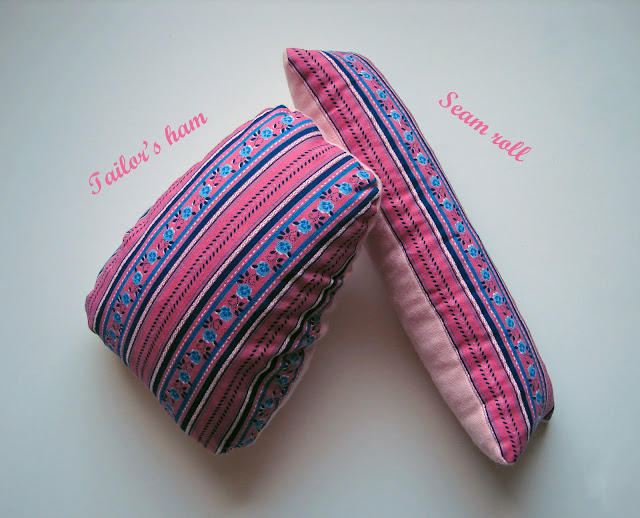 |
| My cutting tools from left to right: paper scissors, dressmaker's shears, 45 mm rotary cutter |
Cutting tools are one of the most important sewing notions. First, you need a pair of scissors for cutting paper or cardboard patterns. They can be regular sharp paper scissors or special pattern shears, which are heavy duty and make cutting oak tag paper much easier.
 |
| Heavy duty pattern shears |
The second ones are dressmaker's shears. Use them for fabrics only, since paper makes them blunt. I recommend investing in a more expensive pair which can be sharpened and generally lasts much longer. However, some people prefer lighter shears with plastic handles. Those usually can't be sharpened and therefore need to be replaced more frequently. The ones that I have are actually my mum's and are more than 25 years old, but still cutting almost like new. If I'd be buying a new pair, I'd definitely go for Ginghers.
An alternative (or addition) to dressmaker's shears is a rotary cutter - my favourite. There are more blade sizes available. The biggest (60 mm) is used mostly for cutting long, narrow lines (fabric pieces for quilts). The medium size (45 mm) is the most versatile and can be used for cutting fabric for clothes. It's amazing for cutting slippery fabrics such as charmeuse or chiffon. No problems with the curves, as long as they aren't too fine. This is what the smallest (28 and 18 mm) are for - lots of details, curves, inward pointed corners etc. Some people recommend having separate blades for cutting natural and
artificial fibres, since the latter tend to blunt the blade much faster. Also, for cutting with a rotary cutter, you will need a cutting mat or a plate of linoleum.
There are also the so-called pinking (zig-zag) shears, which are used to prevent unravelling of the unfinished edges of the fabric. They come in handy when sewing jackets or coats. The seam allowances (of both garment and lining) don't have to be finished with an overlock or zig-zag stitch, because they aren't visible after you stitch the lining to the garment. You can just trim them with pinking shears. I don't have them yet, but a pair of Ginghers is already on my wishlist.
 |
| Pinking shears |


